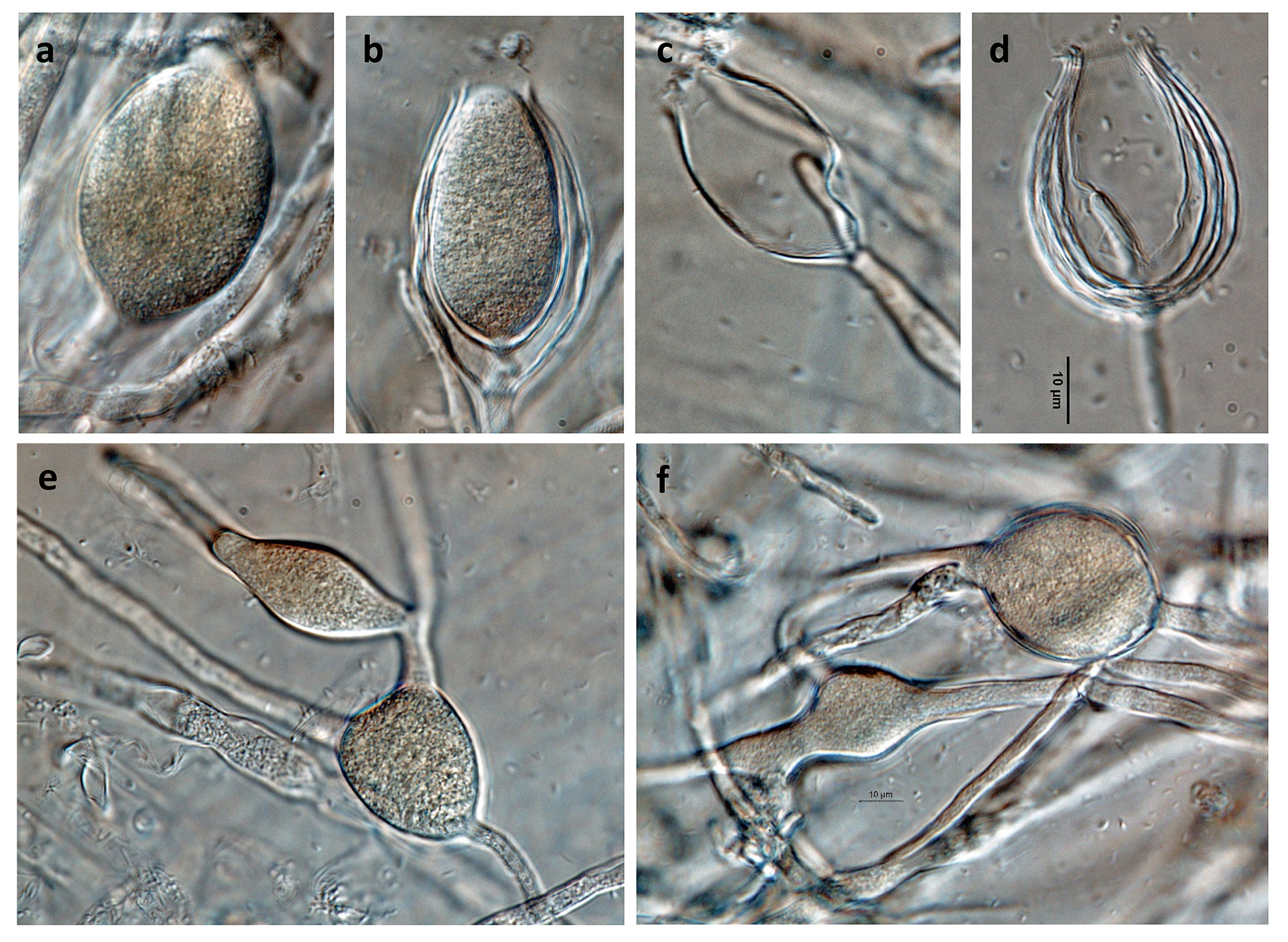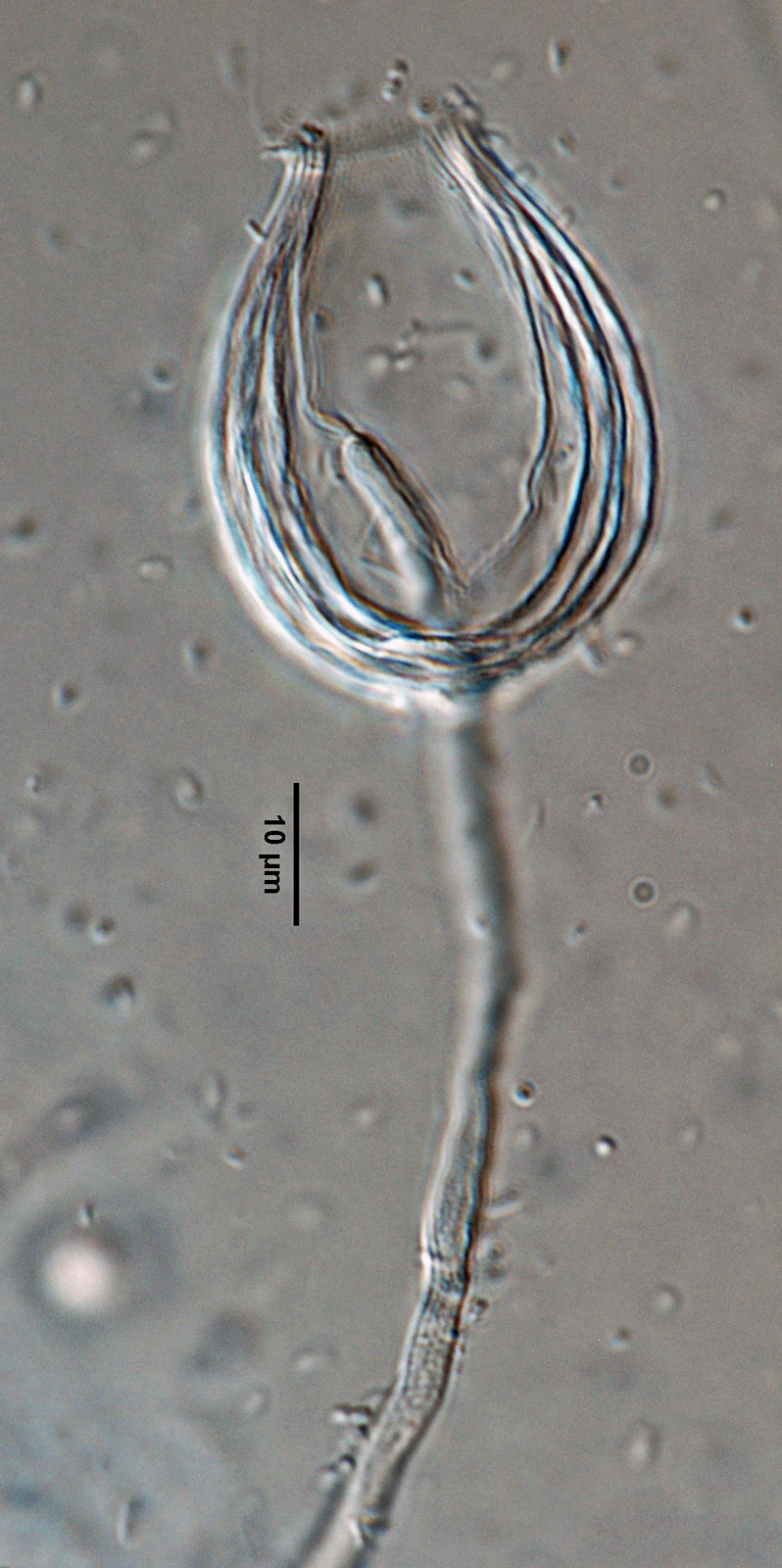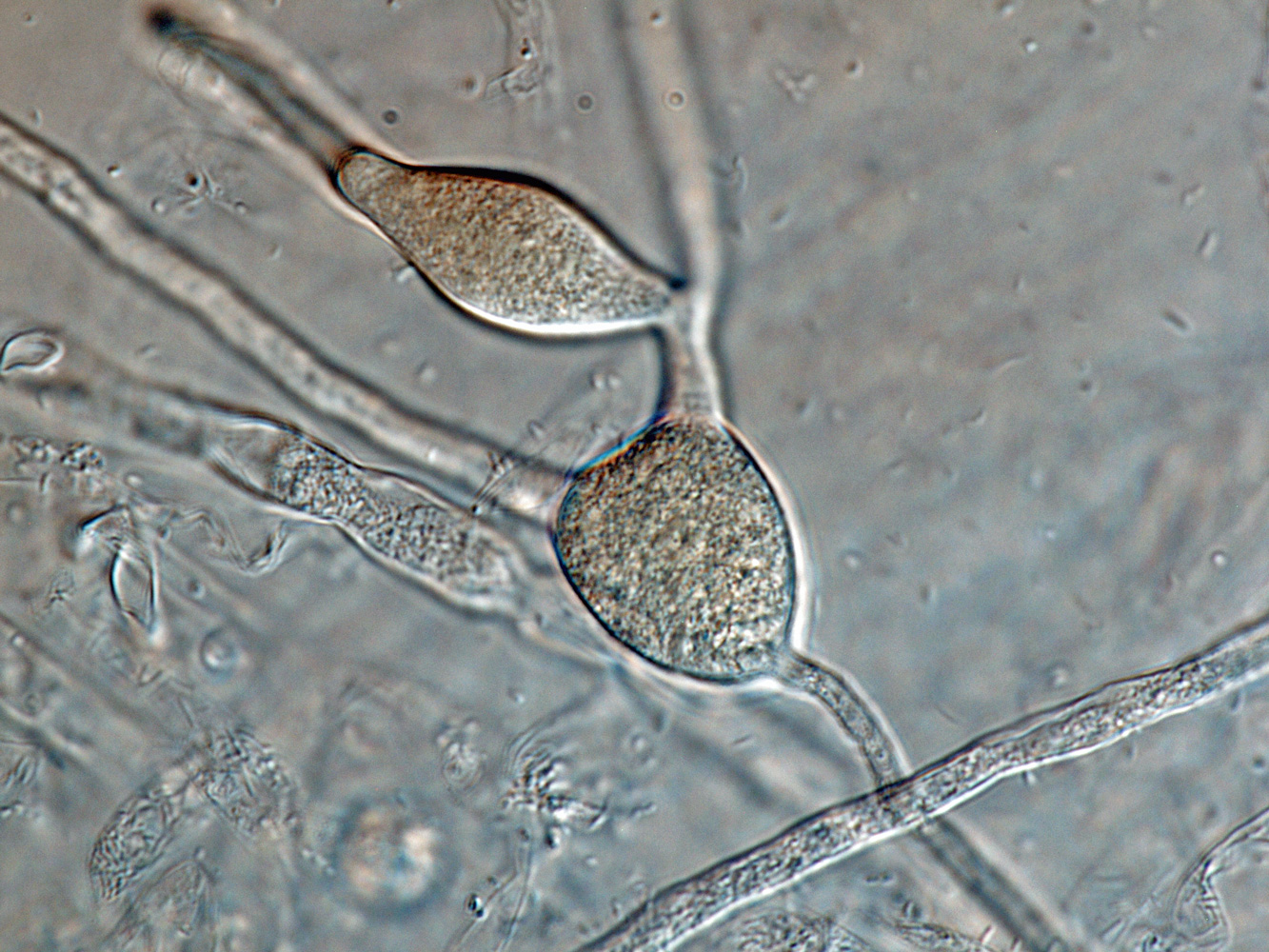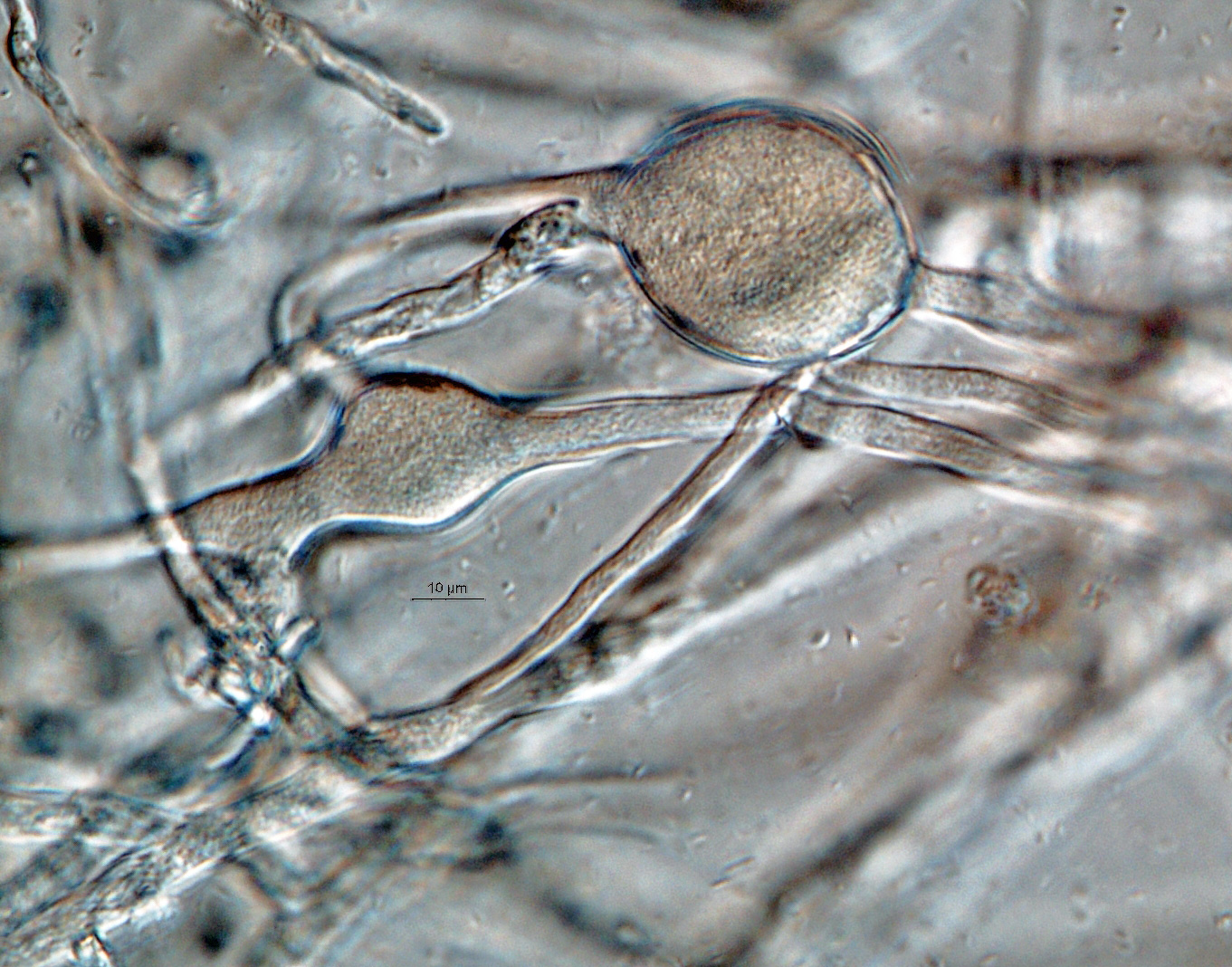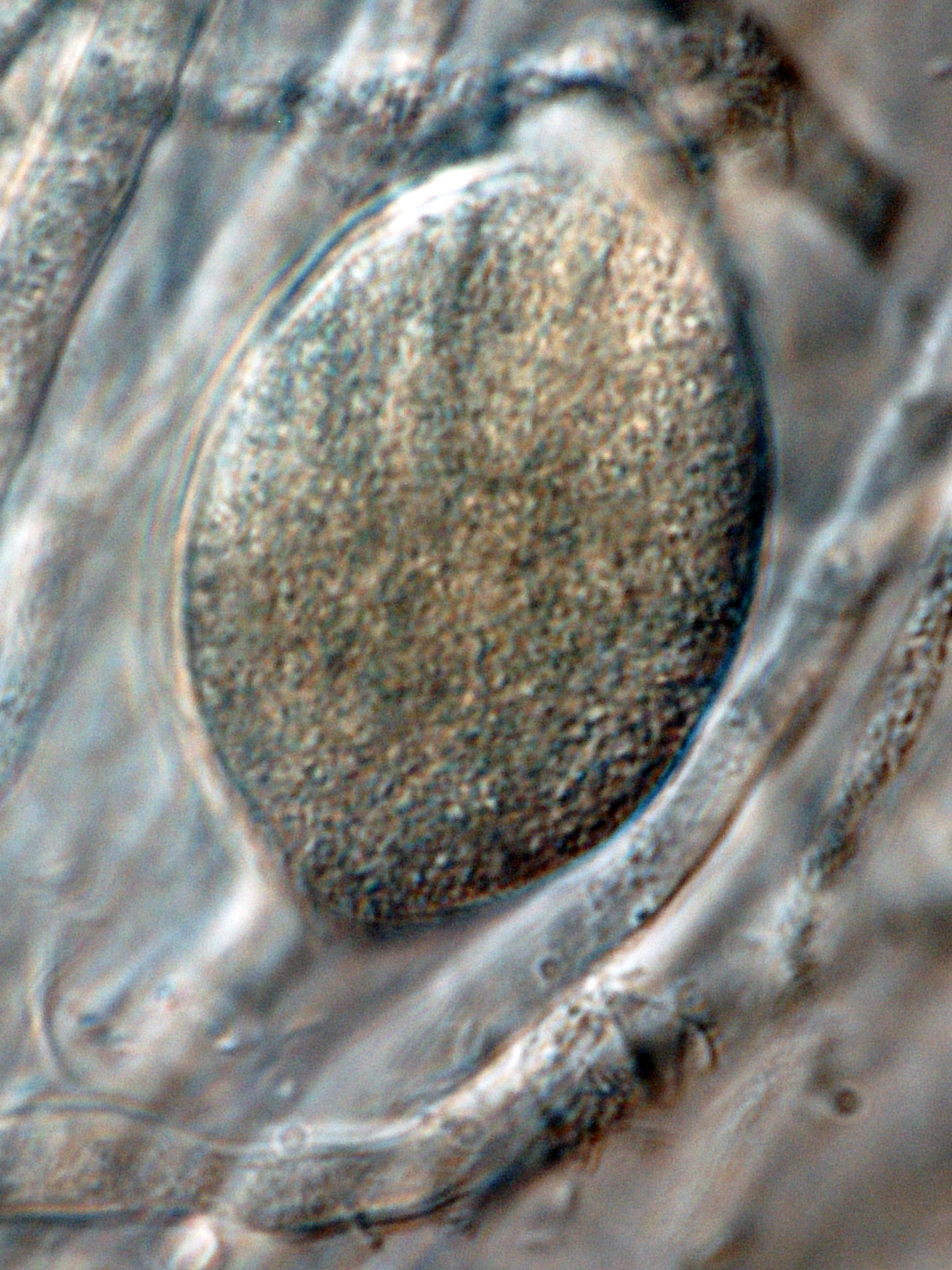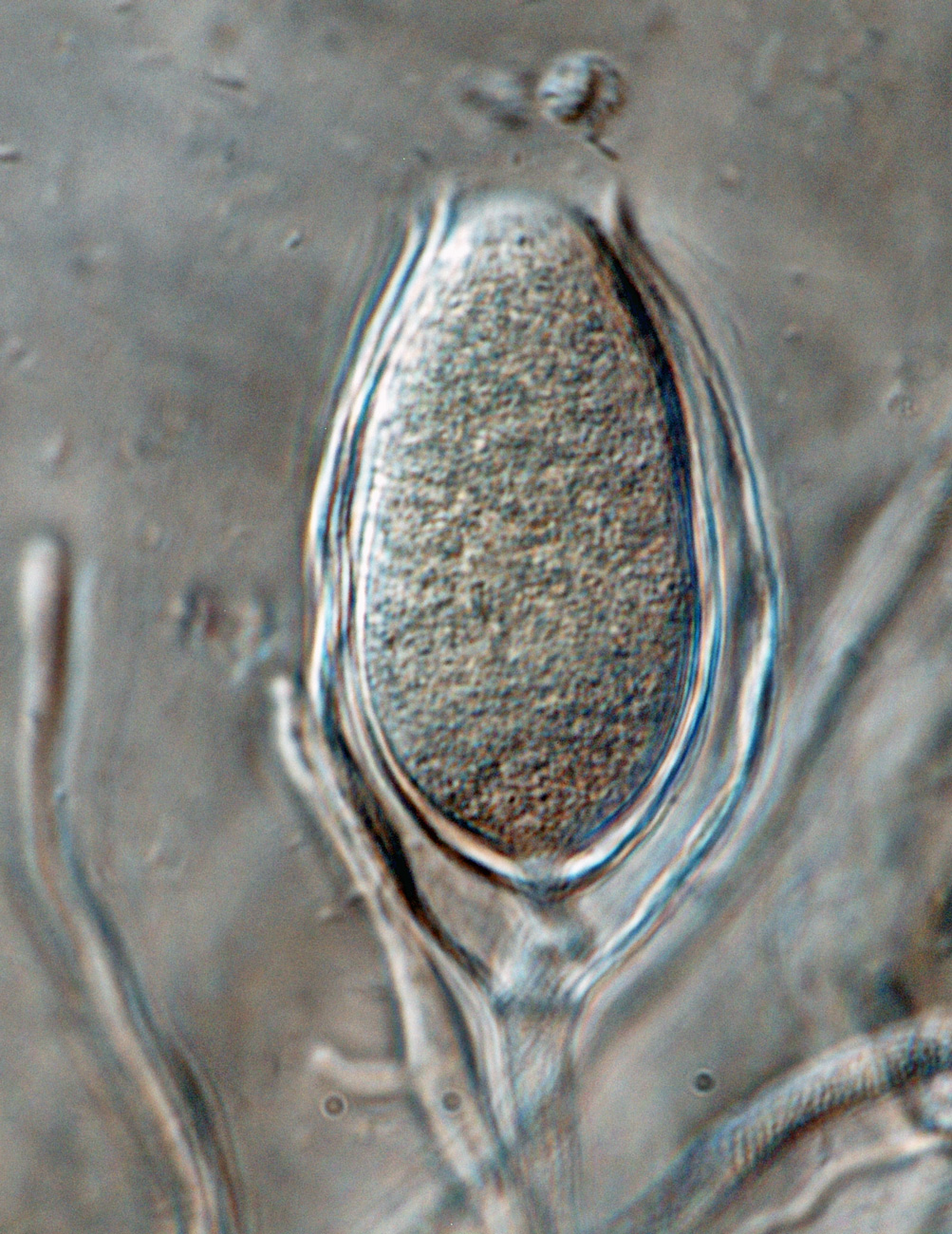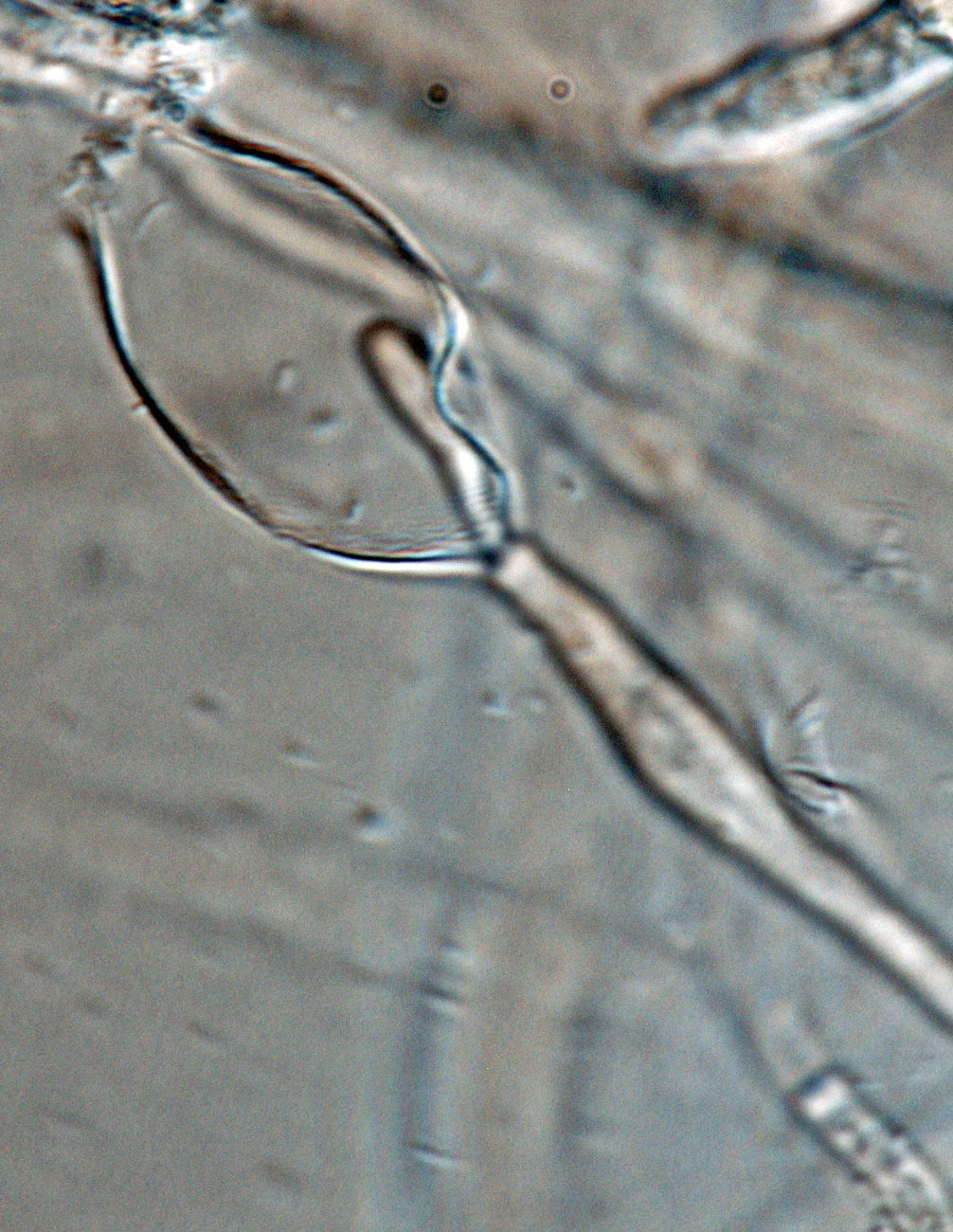Phytophthora inundata (in progress - Abad et al. 2023b)
|
Phytophthora spp. in subclade 6a: portion of the seven-loci ML phylogeny featuring the type cultures of 212 described species (by T. Bourret). Notice the position of P. inundata selected specimen CBS 216.85 = S&T BL 20. Gloria Abad, USDA S&T.
|
|
Phytophthora spp. in subclade 6a: Morphological Tabular key (PDF) and Tabular key legends (PDF) in IDphy2 KEY SECTION. Notice the data of P. inundata selected specimen CBS 216.85 = S&T BL 20. Gloria Abad, USDA S&T.
|
|
Phytophthora inundata (CPHST BL 20) colonies of the paratype grown for 7 days on (a) V8® Agar, (b) potato dextrose agar, and (c) malt extract agar; photo by Krysta Jennings and Leandra Knight, USDA-APHIS-PPQ |
|
Phytophthora inundata (CPHST BL 130) colonies of the paratype grown for 7 days on (a) V8® Agar, (b) potato dextrose agar, and (c) malt extract agar; photo by Krysta Jennings and Leandra Knight, USDA-APHIS-PPQ |
|
Phytophthora inundata (CPHST BL 20, selected specimen) asexual phase: (a, b) nonpapillate persistent sporangia; (b–d) with internal proliferation; (e–f) different shapes of hyphal swellings; photos by Gloria Abad, USDA-APHIS-PPQ. |
|
Phytophthora inundata (CPHST BL 20, selected specimen) asexual phase: persistent sporangium with internal proliferation; photo by Gloria Abad, USDA-APHIS-PPQ. |
|
Phytophthora inundata (CPHST BL 20, selected specimen) asexual phase: variably shapped hyphal swellings; photo by Gloria Abad, USDA-APHIS-PPQ. |
|
Phytophthora inundata (CPHST BL 20, selected specimen) asexual phase: variably shapped hyphal swellings; photo by Gloria Abad, USDA-APHIS-PPQ. |
|
Phytophthora inundata (CPHST BL 20, selected specimen) asexual phase: nonpapillate persistent sporangium; photo by Gloria Abad, USDA-APHIS-PPQ. |
|
Phytophthora inundata (CPHST BL 20, selected specimen) asexual phase: nonpapillate persistent sporangium with internal proliferation; photo by Gloria Abad, USDA-APHIS-PPQ. |
|
Phytophthora inundata (CPHST BL 20, selected specimen) asexual phase: persistent sporangium with internal proliferation; photo by Gloria Abad, USDA-APHIS-PPQ. |
Name and publication
Phytophthora inundata Brasier, Sánch. Hern. & S.A. Kirk (2003)
Brasier CM, Sanchez-Hernandez E, and Kirk SA. 2003. Phytophthora inundata sp. nov., a part heterothallicheterothallic:
pertaining to sexual reproduction in which conjugation is possible only through interaction of different thalli (i.e. different mating types) (cf. homothallic)
pathogen of trees and shrubs in wet or flooded soils. Mycological Research 107: 477–484.
Corresponding author: clive.brasier@forestry.gsi.gov.uk
Nomenclature
from Brasier et al. (2003)
Mycobank
Etymology
refers to the species' habitat in rivers, ponds, and flooded or wet soils
Typification
Types: slide of the oogoniaoogonia:
the female gametangium in which the oospore forms after fertilization by the antheridium
and antheridiaantheridia:
the male gametangium; a multinucleate, swollen hyphal tip affixed firmly to the wall of the female gametangium (the oogonium)
of paired isolates IMI 390141 (holotypus)
Paratypes IMI 389751 and IMI 390121
IMI 389751 = UNITED KINGDOM, Bexley, Kent, from roots of Salix matsudana, 1976, C. M. Brasier & R. G. Strouts, IMI 389751 = P246b, an A2 sexual compatibility type
IMI 390121 = SPAIN, Ecija Sevilla from Olea roots, 1966, E. Sanchez-Hernandez IMI 390121
Ex-paratype: CBS 216.85 and P8479
Sequences for selected specimens in original publication: IMI 389751 = ITS rDNA AF266791
NOTE: Nomenclature under revision.
Selected specimen in other collections
(SE) CBS 216.85, NRRL 64162, CABI IMI 389751 (AVA) (UK) (A2), P246b, WPC P8479, S&T BL 20 (Abad), 30J4 (Hong), p298 (Gallegly), A.de Cock, No. 8312
Molecular identification
Voucher sequences for barcoding genes (ITS rDNA and COI) of the selected specimen (see Molecular protocols page)
Phytophthora inundata isolate CPHST BL 20 (= P8479 WPC) = ITS rDNA MG865516, COI MH136910
Phytophthora inundata isolate CPHST BL 130 (= P19967 WPC) = ITS rDNA MG865517, COI MH136911
Voucher sequences for Molecular Toolbox with seven genes (ITS, β-tub, COI, EF1α, HSP90, L10, and YPT1
(see Molecular protocols page) (In Progress)
Voucher sequences for Metabarcoding High-throughput Sequencing (HTS) Technologies [Molecular Operational Taxonomic Unit (MOTU)]
(see Molecular protocols page) (In Progress)
Sequences with multiple genes for selected specimen in other sources
- NCBI: Phytophthora inundata CPHST BL 20
- NCBI: Phytophthora inundata CPHST BL 130
- NCBI: Phytophthora inundata P8479
- EPPO-Q-bank: Phytophthora inundata CBS 216.85
- BOLDSYSTEMS: Phytophthora inundata OOMYA2077-10 (= CBS 216.85), PHYTO246-10 (= P8479) (barcoding COI & ITS)
Position in multigenic phylogeny with 7 genes (ITS, β-tub, COI, EF1α, HSP90, L10, and YPT1)
Clade clade:
a taxonomic group of organisms classified together on the basis of homologous features traced to a common ancestor
6a
Morphological identification
Colonies and cardinal temperatures
Colony colony:
assemblage of hyphae which usually develops form a single source and grows in a coordinated way
morphology on V-8A with no distinctive pattern, on PDA and MEA with light chrysanthemum pattern. Minimum growth temperature 3°C, maximum 36°C, and optimum 27–30°C.
Asexual phase
SporangiaSporangia:
sac within which zoospores form, especially when water is cooled to about 10°C below ambient temperature; in solid substrates, sporangia usually germinate by germ tubes
nonpapillatenonpapillate:
pertaining to the production of a non-distinct, or inconspicuous, papilla at the distal end of the sporangium (cf. papillate and semipapillate)
; persistentpersistent:
pertaining to sporangia that remain attached to the sporangiophore and do not separate or detach easily (cf. caducous)
; ovoidovoid:
egg-shaped, with the widest part at the base of the sporangium and the narrow part at the apex
, obpyriformobpyriform:
inversely pear-shaped, i.e. with the widest part at the point of attachment (cf. pyriform)
(30–68 μm length x 20–52 μm width) sometimes with tapered bases; showing internal proliferationinternal proliferation:
internal proliferation occurs when the sporangiophore continues to grow through an empty sporangium
; originated in unbranched or simple sympodial sporangiophores, sometimes with swellings in sporangiphore. Hyphal swellings globoseglobose:
having a rounded form resembling that of a sphere
, subglobose, irregular, individual or catenulated and many times with radiating hyphaehyphae:
single, tubular filament of a fungal or oomycete thallus; the basic structural unit of a fungus or oomycete
. ChlamydosporesChlamydospores:
an asexual spore with a thickened inner wall that is delimited from the mycelium by a septum; may be terminal or intercalary, and survives for long periods in soil
absent.
Sexual phase
Sterile.
Specimen(s) evaluated
Phytophthora inundata CPHST BL 20, duplicate of P8479 (World Phytophthora Collection)
Phytophthora inundata CPHST BL 130, duplicate of P19967 (World Phytophthora Collection)
Hosts and distribution
Distribution: Europe (France, Denmark, Hungary, Spain, UK), Asia (India), Australia, South America (Brasier et al. 2003), recently isolated from roots of alfalfa in CA (Ho et al. 2006)
Substrate: roots, collars of trees and shrubs in wet or flooded soil; debris, water
Disease note: root and collar rot
Host: plants in multiple families, including Aesculus hippocastanum (chestnut, Sapindaceae), Medicago (alfalfa, Fabaceae), Olea (olive, Oleaceae), Salix (willow, Salicaceae) and Vitis (grapevine, Vitaceae)
Retrieved January 31, 2018 from U.S. National Fungus Collections Nomenclature Database.
Additional references and links
- SMML USDA-ARS: Phytophthora inundata
- EPPO Global Database: Phytophthora inundata
- Forest Phytophthoras of the world: Phytophthora inundata
- CABI Digital Library: Phytophthora inundata
- Encyclopedia of Life (EOL): Phytophthora inundata
- Index Fungorum (IF): Phytophthora inundata
- Google All Phytophthora inundata
- Google Images Phytophthora inundata
- Google Scholar Phytophthora inundata
Fact sheet author
Z. Gloria Abad, Ph.D., USDA-APHIS-PPQ-S&T Plant Pathogen Confirmatory Diagnostics Laboratory (PPCDL), United States of America.



